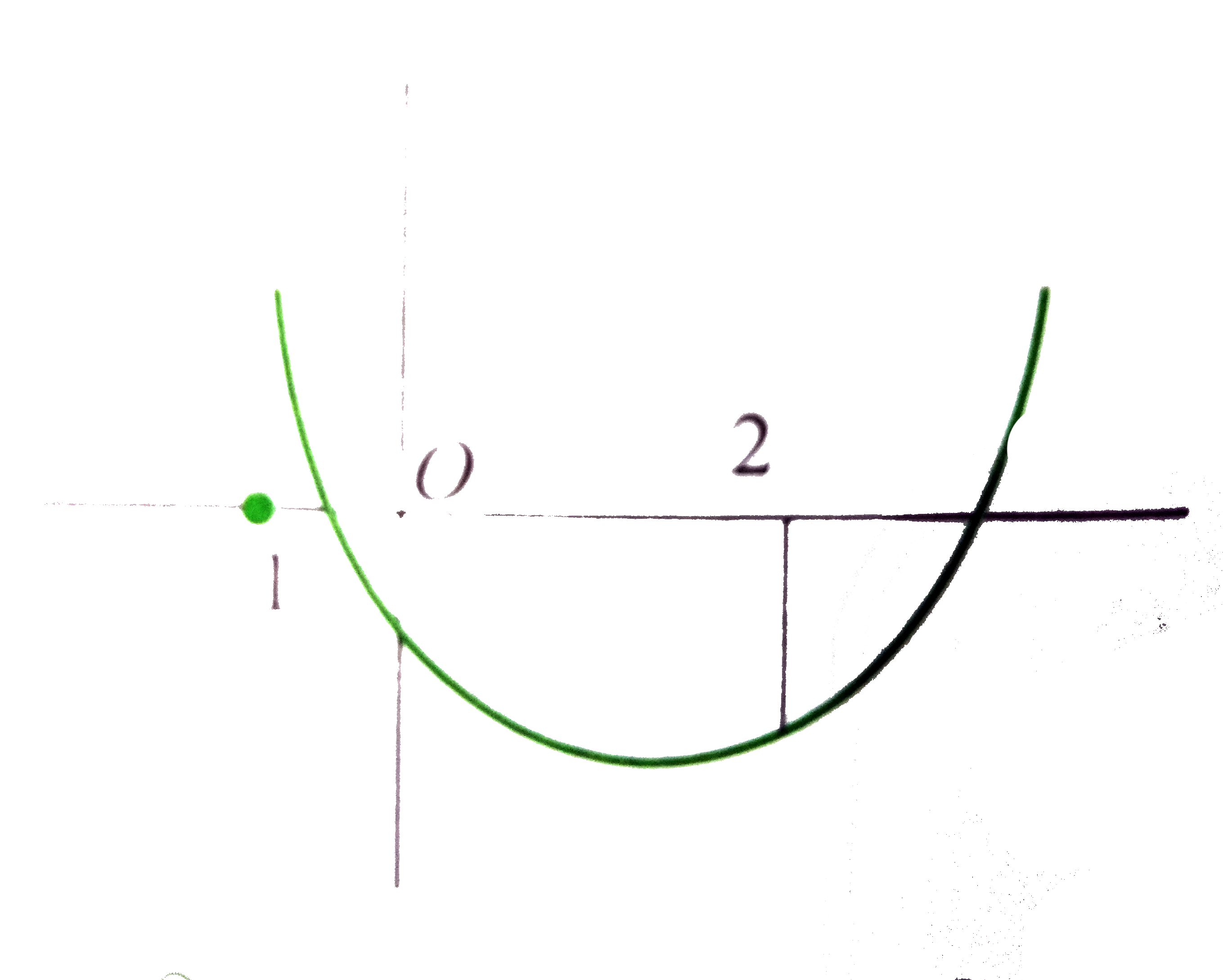The range of a for which the equation x2+ax−4=0 has its smaller root in the interval (−1,2) is
A
(−∞,−3)
B
(0, 3)
C
(0,∞)
D
(−∞,−3)∪(0,∞)
Video Solution
Text Solution
The correct Answer is:A
Clearly , f(−1)>0,f(2)<0
Now ,
f(0)=−4<0
⇒f(−1)=1−a−4>0
and f(2)=4+2a−4<0
⇒a<−3anda<0
⇒a∈(−∞),−3)

|
Updated on:21/07/2023
Topper's Solved these Questions
- BOOK - CENGAGECHAPTER - THEORY OF EQUATIONSEXERCISE - Exercise (Multiple)38videos
THEORY OF EQUATIONS
- BOOK - CENGAGECHAPTER - THEORY OF EQUATIONSEXERCISE - Exercise (Comprehension)37videos
THEORY OF EQUATIONS
- BOOK - CENGAGECHAPTER - THEORY OF EQUATIONSEXERCISE - Exercise 2.139videos
THEORY OF EQUATIONS
- BOOK - CENGAGECHAPTER - STRAIGHT LINESEXERCISE - JEE Advanced Previous Year4videos
STRAIGHT LINES
- BOOK - CENGAGECHAPTER - THREE DIMENSIONAL GEOMETRYEXERCISE - Question Bank20videos
THREE DIMENSIONAL GEOMETRY
Similar Questions
Knowledge Check
- Question 1 - Select One
The value of 'a' for which the equation ax2−2√5x+4=0 has equal roots ,is
A54B45C−54D−53 - Question 2 - Select One
The number of values of k for which the equation x2−2x+k=0 has two distinct roots lying in the interval (0,1) is
A0B1C2Dinfinitely many - Question 3 - Select One
The number of values of k for which the equation x2−3x+k=0 has two distinct roots lying in the interval (0,1) is
AthreeBtwoCinfiniteDno value of k will satisfy
Prove that the equation x3+2x2+x+4=0 has exactly one root in the open interval (-3,-2).
View SolutionWrite the set of values of 'a' for which the equation x2+ax−1=0 has real roots.
View SolutionThe number of values of k for which the equation x2−3x+k=0 has two distinct roots lying in the interval (0, 1) are interval (0, 1) are
View SolutionThe set of values of k for which roots of the equation x2−3x+k=0 lie in the interval (0, 2), is
View SolutionThe value of 'a' for which the equation ax2−2√5x+4=0 has equal roots ,is
View Solution

